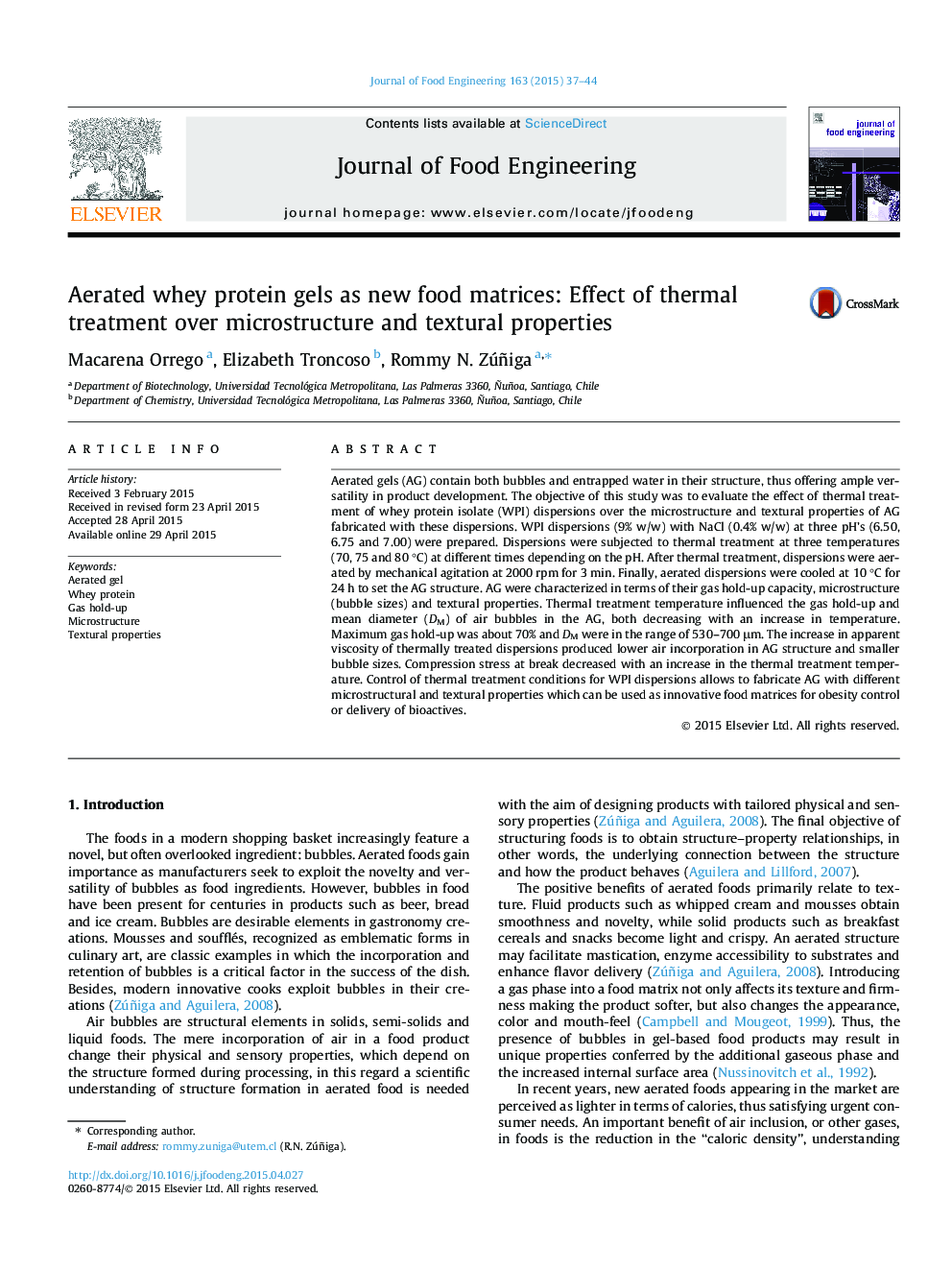| کد مقاله | کد نشریه | سال انتشار | مقاله انگلیسی | نسخه تمام متن |
|---|---|---|---|---|
| 222913 | 464315 | 2015 | 8 صفحه PDF | دانلود رایگان |
• We fabricated aerated gels (AG) from thermally treated WPI dispersions at different temperatures and pH’s.
• Higher viscosity of dispersions decreases the gas hold-up and mean bubble size of AG.
• Stress at break of AG was influenced by the microstructure of the gel walls.
• Correlations between mean bubble diameter, gas hold-up and stress at break were found.
• Different structures of AG were formed by controlling the pH and thermal treatment of WPI dispersions.
Aerated gels (AG) contain both bubbles and entrapped water in their structure, thus offering ample versatility in product development. The objective of this study was to evaluate the effect of thermal treatment of whey protein isolate (WPI) dispersions over the microstructure and textural properties of AG fabricated with these dispersions. WPI dispersions (9% w/w) with NaCl (0.4% w/w) at three pH’s (6.50, 6.75 and 7.00) were prepared. Dispersions were subjected to thermal treatment at three temperatures (70, 75 and 80 °C) at different times depending on the pH. After thermal treatment, dispersions were aerated by mechanical agitation at 2000 rpm for 3 min. Finally, aerated dispersions were cooled at 10 °C for 24 h to set the AG structure. AG were characterized in terms of their gas hold-up capacity, microstructure (bubble sizes) and textural properties. Thermal treatment temperature influenced the gas hold-up and mean diameter (DM) of air bubbles in the AG, both decreasing with an increase in temperature. Maximum gas hold-up was about 70% and DM were in the range of 530–700 μm. The increase in apparent viscosity of thermally treated dispersions produced lower air incorporation in AG structure and smaller bubble sizes. Compression stress at break decreased with an increase in the thermal treatment temperature. Control of thermal treatment conditions for WPI dispersions allows to fabricate AG with different microstructural and textural properties which can be used as innovative food matrices for obesity control or delivery of bioactives.
Journal: Journal of Food Engineering - Volume 163, October 2015, Pages 37–44
